

The Ultimate Cambridge Travel Bucket List
Cambridge is famous for its prestigious university, which was founded in the 13th century and is one of the world's top academic institutions. The city is also known for its beautiful architecture, particularly the historic colleges and churches that make up the university, as well as its picturesque river, the River Cam, which runs through the heart of the city and is home to the famous punting tradition.
In addition to its academic and architectural attractions, Cambridge has a vibrant cultural scene, with a variety of museums, galleries, theatres, and music venues. It also offers excellent shopping and dining options, with a range of independent shops and restaurants as well as well-known chains.
You can see more of my content at:
CategorySight-seeing
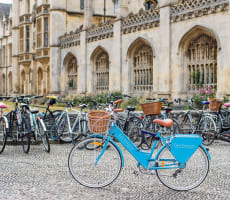
Bicycle
Cambridge is known for being a very bike-friendly city, with a large number of residents and visitors using bicycles as their primary mode of transportation.
- Cambridge
- Sight-seeing

Walk Around
Exploring Cambridge on foot is a great way to get a feel for the city's rich history and charming architecture.
- Cambridge
- Sight-seeing
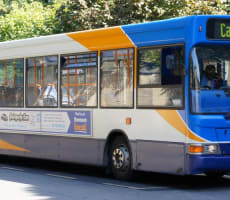
Bus
Exploring Cambridge by bus is a convenient and affordable way to see the city's main attractions but you won't be able to see attractions as much compared to walking, biking and punting.
- Cambridge
- Sight-seeing
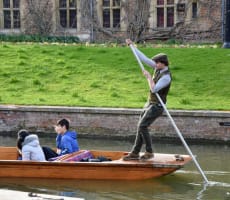
Punting
It's important to note that a punt is different from a gondola both in design and the way it's propelled. Unlike a gondola, which is propelled through rowing, punting requires a simple pushing motion with the pole. So make sure you don't confuse the two.
- Cambridge
- Sight-seeing
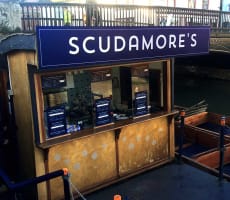
Scudamore's
We opted for Scudamore's during our punting tour and our punting guide, Will, was fantastic. I highly recommend him. However, I suggest purchasing your tickets either in person or online and avoiding Kings Parades when buying punting tickets.
- Magdalene Street
- Sight-seeing
CategoryLandmarks
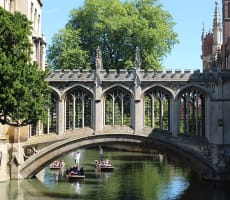
College Bridge
The oldest standing bridge, known as College Bridge, has an interesting feature: a missing stone piece from the arch. It's unclear why it's missing, but there are a few legends about it. One such tale suggests that the builder intentionally left it unfinished to pay less tax.
- Impington
- Landmarks
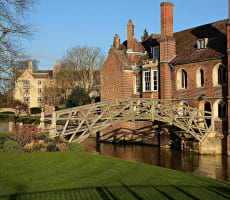
Mathematical Bridge
This bridge is known as the Mathematical Bridge, and there are several myths surrounding it, but they're all incorrect. One common misconception is that Isaac Newton constructed the bridge, which is impossible since he had already passed away about two decades before it was built. Moreover, there are no mathematical symbols in the bridge's design, contrary to popular belief.
- Silver Street
- Landmarks
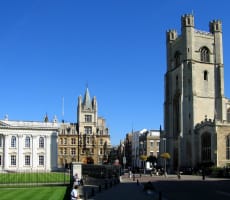
King's Parade
Kings Parade is the main street in Cambridge and is typically bustling with activity. Unfortunately, you may come across several illegal punting operators here. It's best to avoid purchasing punting tickets from them.
- Cambridge
- Landmarks
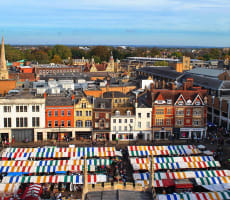
Market Square
Market Square has been the site of the market since Saxon times and is located in the heart of Cambridge. You can find just about anything you're looking for here. The market is open every day from 10 a.m. to 4 p.m.
- Saint Neots
- Landmarks
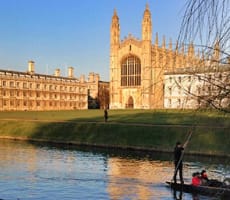
Cambridge University
The city of Cambridge is known for its unique university system, with various colleges spread throughout the city. Trinity College and St. John's College are just a few examples, with the former being the largest and wealthiest college in the city.
- Cambridge
- Landmarks

Cambridge Botanic Garden
The admission fee to Cambridge University Botanic Garden is six pounds, and it's worth mentioning that the view you get here changes with the seasons.
- Brookside
- Landmarks
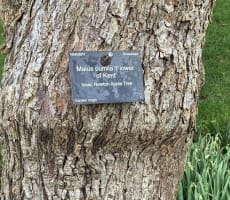
Apple Tree
Do you remember the story of how Newton was sitting under a tree when an apple fell on his head, and the story of correlation arose? Well, this tree has a distant connection to that story. The tree that grew in Newton's garden was blown down in 1816. This particular tree was gifted to the garden in 1954 as a grafted plant, not grown from seed. This means that it is genetically identical to the original and produces the same variety of cooking apples as Newton's did.
- Trinity Street
- Landmarks